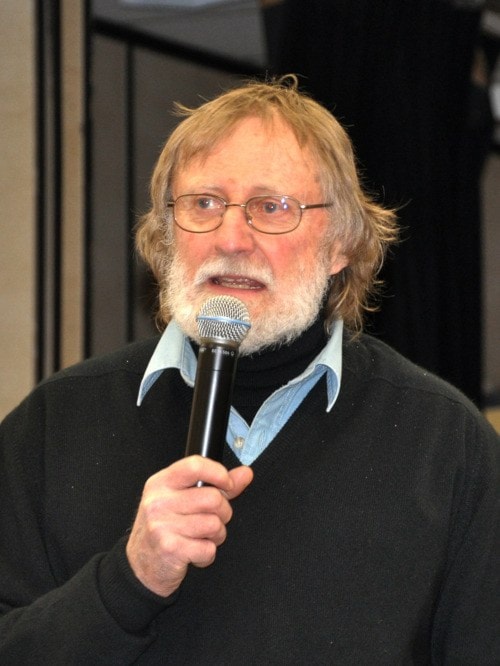On Friday Jan. 20, Chris Harris, nature photographer, and his wife Rita Giesbrecht presented “Motherstone: British Columbia’s Volcanic Plateau” to a full Pit at Clearwater Secondary School. Harris and Giesbrecht took the audience on an educational journey through the magical landscapes that surround us, framed by Harris’ stunning almost surreal photographs.
“I wanted to make books that had greater knowledge of the area,” Harris said. He likes to approach experts in the field and work with them, bringing art and science together. Harris wrote and published “Motherstone: British Columbia’s Volcanic Plateau” in conjunction with B.C. author Harold Rhenisch and scientific consultant Dr. Mary Lou Bevier of UBC. The book tells the story about the Motherstone, an area situated in British Columbia’s Central Plateau that stretches from Anaheim Peak to Painted Chasm River and consists of a series of shield volcanoes. They form a very dynamic and interesting landscape to research and photograph.
“Volcanic grounds provide amazing patterns,” he said. “They are nature’s art work.”
He captures this art in his images, creating fine art photography.
“We live on a landscape that is still very dynamic” said Giesbrecht. Everything is always moving in our area where the North American Plate and the Juan de Fuca Plate meet.
To reach the volcanoes they want to visit and photograph, Harris and Giesbrecht typically hike or ride on horseback into very remote areas, often traveling along with local outfitters and using their knowledge to navigate their way through the terrain.
“Hiking through a landscape gives it a special feel. You get really close to nature and get to hear the story it has to tell,” Harris told the audience.
Backpacking and photographing is challenging, even more so from horseback. Harris scouts out spots around their campsites in case - what he calls - “magical moments” occur. That way he knows exactly where to go as soon as this happens. He will only have one opportunity to take the perfect photograph. If he does not like how the photo turns out, he cannot go back and re-do his shot because he only travels through the landscape once and will not be there again. He also has to take advantage of the light, which can be very challenging with bad weather.
When photographing, he always looks at the lines and textures of the landscapes. He loves the shapes, lines, and contrasts. Harris has learned to trust the land and that it will tell him its story.
“Our landscape is beauty. The very first gift the earth gave to us.” He also trusts the people he works with to tell him their stories. “Art is about human spirit” and this way he creates true works of art.
The evening is concluded with a poem from Harold Rhenisch “The promise of the rivers” and a 15-minute photo presentation, that was enjoyed in silence leaving everyone in awe.
Thanks to the Wells Gray Outdoor Club, this interesting presentation was brought to our community.
